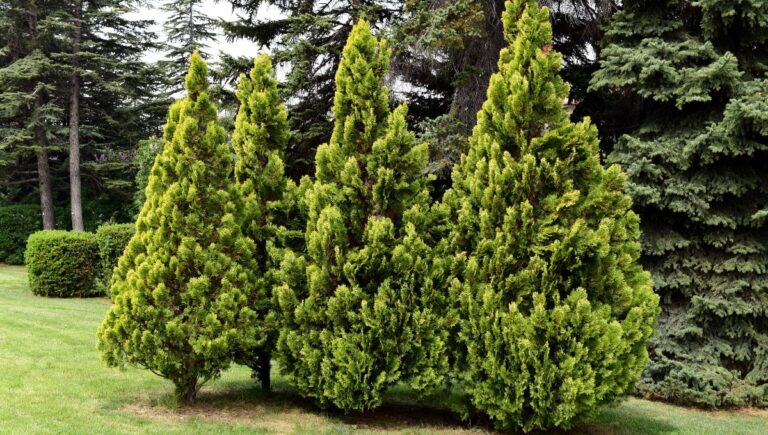Trachystemon Orientalis: A Comprehensive Guide to Its Characteristics and Uses
Trachystemon Orientalis Overview
Trachystemon orientalis, also known as Kaldirik or Hodan, is a herbaceous perennial plant belonging to the Boraginaceae family. It is a native plant of the Black Sea region and is widely distributed in Turkey, Georgia, and Russia.
The plant grows up to 1.5 meters in height and has large, heart-shaped leaves that are covered with fine hairs. The flowers are small, bell-shaped, and pinkish-purple in color, and they bloom in late winter or early spring. The plant is known for its medicinal properties and is used in traditional medicine to treat various ailments.
Trachystemon orientalis is a hardy plant that can grow in a variety of soil types, including sandy, loamy, and clay soils. It prefers moist, well-drained soil and can tolerate partial shade. The plant is easy to grow and requires minimal care, making it an ideal choice for home gardens.
The leaves of Trachystemon orientalis are edible and have a slightly bitter taste. They can be used in salads, soups, and stews, or sautéed with garlic and olive oil. The plant is also used as a vegetable in some parts of Turkey, where the young stems are harvested and cooked.
In addition to its culinary uses, Trachystemon orientalis has several medicinal properties. It is rich in antioxidants, which help to protect the body against free radicals and prevent oxidative damage. The plant also has anti-inflammatory properties and can help to reduce inflammation in the body.
Overall, Trachystemon orientalis is a versatile plant that has many uses and benefits. Whether you are looking to add some greenery to your garden or want to explore the plant’s medicinal properties, Trachystemon orientalis is an excellent choice.
Botanical Description
Trachystemon orientalis, commonly known as Abraham-Isaac-Jacob or early-flowering borage, is a monotypic genus in the Boraginaceae family. This herbaceous plant is native to the Black Sea coast in Turkey and is widely distributed in the region. The plant is known for its medicinal and culinary properties and is consumed as a vegetable, pickle, and tea.
Floral Characteristics
The flowers of Trachystemon orientalis are showy, blue, and funnel-shaped, with five petals and five stamens. The flowers are arranged in clusters at the end of the stem and bloom from April to May. The inflorescence is a scorpioid cyme, which means that the flowers grow in a spiral pattern along the stem. The plant is self-fertile and can produce seeds without cross-pollination.
Foliage Description
The leaves of Trachystemon orientalis are heart-shaped, with a long petiole and a pointed tip. The leaves are alternate and arranged in a rosette at the base of the stem. The leaves are hairy and can grow up to 20 cm in length and 15 cm in width. The plant has a basal rosette of leaves that dies back in the winter, and new leaves emerge in the spring.
Trachystemon orientalis grows up to 90 cm in height and has a deep taproot that can reach up to 1 meter in length. The stem is erect, hairy, and branched near the top. The plant prefers moist, well-drained soil and partial shade but can tolerate full sun. It is hardy to USDA zones 5-8.
In summary, Trachystemon orientalis is a unique and valuable plant with many uses. Its blue flowers and heart-shaped leaves make it a beautiful addition to any garden, while its medicinal and culinary properties make it a valuable resource for herbalists and chefs alike.
Growth and Habitat
Trachystemon orientalis, commonly known as Abraham-Isaac-Jacob, is a perennial plant that grows up to 1.5 meters tall. The plant has a rhizomatous root system and green leaves that are heart-shaped with a pointed tip. The leaves grow up to 20 cm wide and 30 cm long. The flowers are small and bloom in early spring. The plant produces seeds that are spread by wind and water.
Native Distribution
Trachystemon orientalis is native to the Western Asia region, including Turkey, the Caucasus, and southeastern Europe. The plant grows in moist, shaded dense forests and along riverbanks. It is commonly found in habitats with low light intensity, such as beech forests.
Naturalized Locations
Trachystemon orientalis has been naturalized in some areas of Europe, including England. The plant has also been introduced to other parts of the world, such as the East Aegean Islands. It is often grown as an ornamental plant in gardens and parks.
In its natural habitat, Trachystemon orientalis plays an important role in the ecosystem. It provides shelter and food for insects and small animals. The plant is also used in traditional medicine for its anti-inflammatory and antifungal properties.
Overall, Trachystemon orientalis is a hardy plant that can thrive in a variety of conditions. Its ability to adapt to different environments has made it a popular choice for gardeners and landscapers.
Cultivation and Care
Trachystemon orientalis is a low-maintenance perennial plant that is easy to grow in your garden. In this section, we will discuss the soil and light requirements, as well as the water and temperature needs of this plant.
Soil and Light Requirements
Trachystemon orientalis prefers a soil that is slightly acidic to neutral with a pH range of 6.0 to 7.0. The soil should be well-draining, but moist, and rich in organic matter. This plant can tolerate a wide range of soil types, including rough and dry soils. However, it does not perform well in heavy shade or dry shade.
This plant prefers full sun to partial shade, and it can tolerate both. In areas with hot summers, it is best to plant Trachystemon orientalis in a location with afternoon shade to prevent the leaves from scorching.
Water and Temperature Needs
Trachystemon orientalis needs regular watering to establish itself in the garden. During the spring and summer months, it requires moderate watering, but it can withstand short periods of drought once established. In the winter, it is best to reduce watering and let the soil dry out between watering sessions.
This plant is hardy in USDA zones 5 to 9, and it can tolerate temperatures as low as -15°F (-26°C). However, it is best to provide winter protection in colder regions. Trachystemon orientalis can be propagated by division in the spring or fall.
In my garden, I have found that Trachystemon orientalis performs well in the Pacific Northwest region of the United States. It is easy to grow, and it adds a beautiful splash of color to the garden in the spring.
Usage and Benefits
Trachystemon orientalis is a versatile plant that can be used for various purposes. Here are some of the ways in which you can use this plant:
Ornamental Purposes
Trachystemon orientalis is a great plant for ornamental purposes. It has beautiful foliage that can add color and texture to your garden. The plant is also quite hardy and can tolerate different growing conditions. It grows well in shady areas and can naturalize quickly, making it an excellent choice for ground cover applications.
Ground Cover Applications
Trachystemon orientalis is a popular choice for ground cover applications. It can quickly spread and cover large areas, making it an excellent choice for preventing soil erosion. The plant is also low maintenance and does not require much attention once established. It is drought-tolerant and can withstand harsh winter conditions.
When using Trachystemon orientalis as ground cover, it is important to note that it can become weedy if left unchecked. It is best to keep it contained and prune it regularly to prevent it from spreading too much.
Overall, Trachystemon orientalis is an excellent plant for both ornamental and practical purposes. Its versatility and hardiness make it an excellent choice for any garden.
Scientific Classification and Synonyms
Taxonomic Hierarchy
Trachystemon orientalis is a plant species belonging to the Boraginaceae family, which is a part of the Boraginales order. The Boraginales order is a member of the asterids clade, which is a part of the eudicots group. The eudicots group is a member of the angiosperms, which are flowering plants. The angiosperms are a part of the plantae kingdom.
Known Synonyms
Trachystemon orientalis has several known synonyms. One of its synonyms is Borago orientalis, which is sometimes used in unscientific sources. Other synonyms include Nordmannia cordifolia, Daphnopsis cordifolia, Borago constantinopolitana, Borago cordifolia, and Borago inflata.
The synonym Borago orientalis is sometimes used to refer to Trachystemon orientalis. However, it is important to note that Borago orientalis is a separate species of plant that belongs to the Boragineae tribe within the Boraginaceae family. The Boragineae tribe includes several other plant species, such as Symphytum bulbosum, Trachystemon orientalis, and Borago officinalis.
Trachystemon orientalis has several homotypic synonyms, which means that they are synonyms that refer to the same taxonomic entity. These homotypic synonyms include Nordmannia cordifolia, Daphnopsis cordifolia, Borago constantinopolitana, Borago cordifolia, and Borago inflata.
According to the Flora of Turkey, Trachystemon orientalis was first described by Davis in 1965. The plant is native to Turkey-in-Europe and is commonly found in botanic gardens. The Flora Europaea also lists Trachystemon orientalis as a valid species of plant.
The Board of Trustees of the Royal Botanic Gardens, Kew lists Trachystemon orientalis as a valid species of plant in its POWO database. The database also lists several synonyms of the plant, including Borago orientalis and Nordmannia cordifolia.
In summary, Trachystemon orientalis is a plant species belonging to the Boraginaceae family. It has several known synonyms, including homotypic synonyms. The plant is native to Turkey-in-Europe and is commonly found in botanic gardens.
References and Further Reading
If you want to learn more about Trachystemon orientalis, there are several resources available that can provide you with more information. Here are a few references and further reading materials that you may find useful:
-
The Edinburgh University Press has published a book called “Flora Europaea” which contains detailed information about the vascular plants of Europe, including Trachystemon orientalis. This book is a great resource for anyone interested in learning more about the plant’s distribution, morphology, and ecology.
-
Dimopoulos et al. (2013) published an annotated checklist of the vascular plants of Greece. This checklist provides information on the distribution and taxonomy of Trachystemon orientalis in Greece, as well as other relevant information on the plant’s ecology and uses.
-
The “Flora of Turkey and the East Aegean Islands” published by Cambridge University Press is another useful resource for learning about Trachystemon orientalis. This book provides detailed information on the plant’s distribution, morphology, and ecology in Turkey and the surrounding regions.
Overall, these references and further reading materials can provide you with a wealth of information on Trachystemon orientalis. Whether you’re interested in the plant’s distribution, morphology, ecology, or uses, there is something here for everyone. So if you’re looking to learn more about Trachystemon orientalis, be sure to check out these resources.
Frequently Asked Questions
Is Trachystemon orientalis safe to eat?
Yes, Trachystemon orientalis is safe to eat. In fact, it is commonly used as a vegetable in some parts of the world, including Turkey. The leaves and stems of the plant can be eaten raw or cooked, and have a slightly bitter taste.
What are the nutritional benefits of Trachystemon orientalis?
Trachystemon orientalis is a good source of vitamins A and C, as well as minerals such as calcium, potassium, and magnesium. It also contains antioxidants, which can help protect the body from damage caused by free radicals.
How does Trachystemon orientalis grow?
Trachystemon orientalis is a perennial plant that can grow up to 1 meter in height. It prefers moist, well-drained soil and partial shade, and can be propagated by dividing the root ball or by seed.
What are some common uses for Trachystemon orientalis?
Trachystemon orientalis is commonly used as a vegetable in some parts of the world, including Turkey. It can also be used as an ornamental plant, due to its attractive foliage and flowers.
Is Trachystemon orientalis invasive?
Trachystemon orientalis is not considered invasive in most areas, but it can spread quickly in some conditions. It is recommended to plant it in a contained area or to remove the flowers before they produce seeds to prevent unwanted spread.
What are the medicinal properties of Trachystemon orientalis?
Trachystemon orientalis has been traditionally used in folk medicine to treat a variety of ailments, including respiratory and digestive problems. Some studies have also shown that it has antioxidant and anti-inflammatory properties, which may be beneficial for overall health. However, more research is needed to fully understand its medicinal properties.



